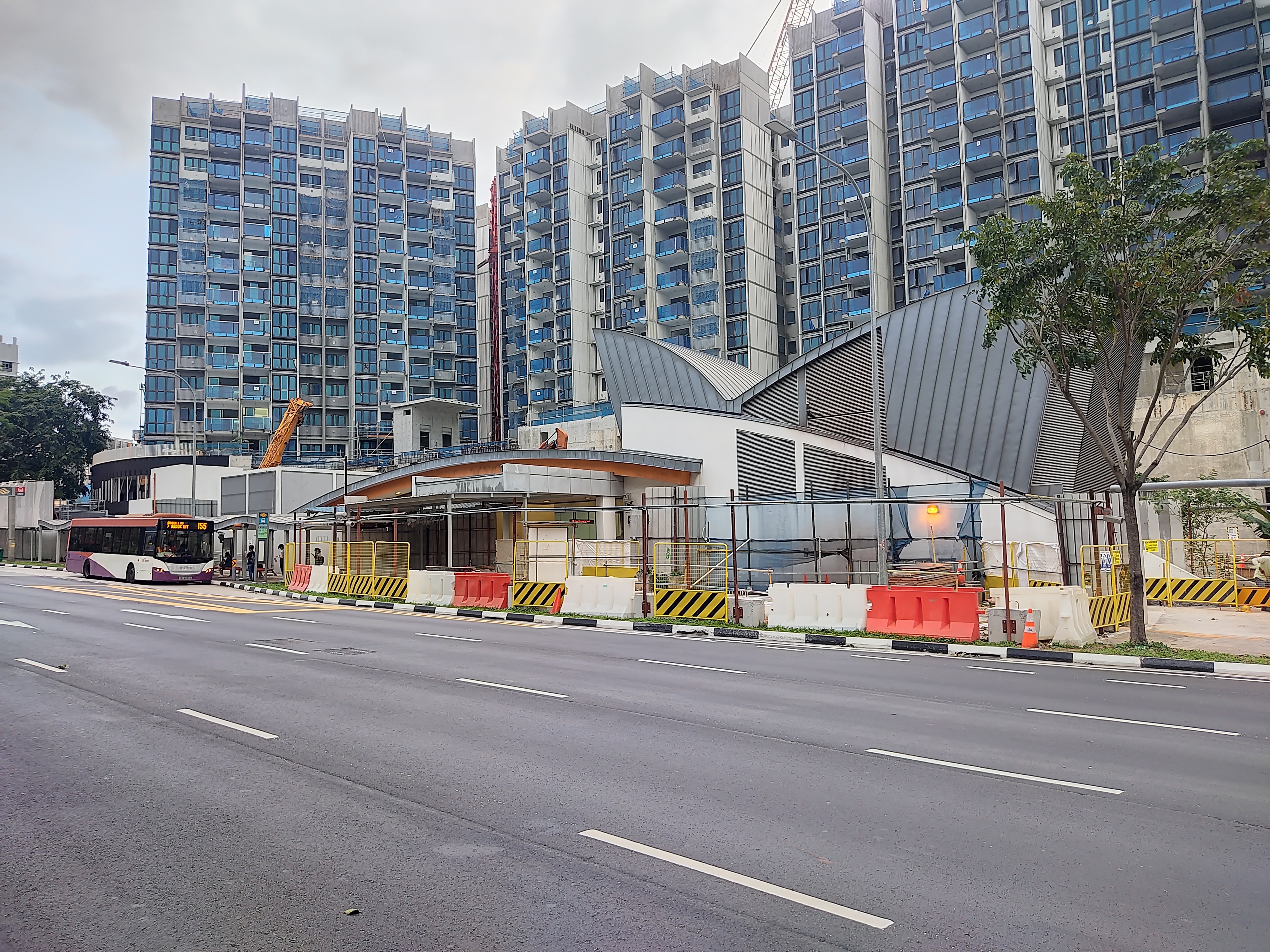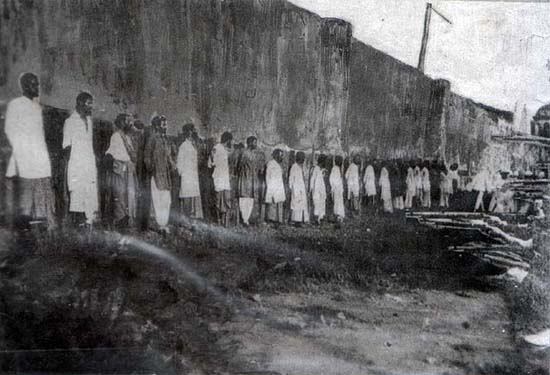|
Bidadari Cemetery
Bidadari Cemetery ( Malay: ''Perkuburan Bidadari'', Chinese: 比达达利坟场) is a defunct cemetery in Singapore. It used to serve the Christian, Muslim, Hindu and Sinhalese communities, and accepted burials between 1907 and 1972. The site of Bidadari Cemetery used to be the Istana residence of one of Sultan Abu Bakar of Johor's wives.Bidadari Cemetery ''Singapore Infopedia''. By 2006, all known graves were exhumed to make way for development of the Bidadari Estate. History A 45-acre estate in Singapore was first acquired by the British civil engineer Henry Minchin Simons in 1855, there he had the residence built between 1855 to 1861 and later exchanged it with[...More Info...] [...Related Items...] OR: [Wikipedia] [Google] [Baidu] |
Bidadari, Toa Payoh
Bidadari is a housing estate in the Central Region of Singapore, part of the planning area of Toa Payoh. Before the development, the area was the site of Bidadari Cemetery, which served Christian, Muslim, Hindu and Sinhalese communities. Etymology The word ''bidadari'' means "angel" in Malay, which was in turn derived from the Sanskrit word ''vidhya dhari'', which means a nymph of India's heaven or a houri of paradise. The ''bidadari'' are depicted as angels that preside over the union of flowers. History 19th century: Estates and palace During the early 19th century, a 45-acre of estate land in Singapore was first acquired by the British civil engineer Henry Minchin Simons in 1855, and there he had the house built between 1855 and 1861 and would later exchange the estate with William Napier for his Tyersall estate. The estate was subsequently sold to Temenggong Abu Bakar in the mid-1860s. He gave it to his second wife, a Danish woman Zubaidah binti Abdullah who was b ... [...More Info...] [...Related Items...] OR: [Wikipedia] [Google] [Baidu] |
Housing And Development Board
The Housing & Development Board (HDB) (; ms, Lembaga Perumahan dan Pembangunan; ta, வீடமைப்பு வளர்ச்சிக் கழகம்) or often referred to as the Housing Board, is a statutory board under the Ministry of National Development responsible for Singapore's public housing. Founded in 1960 as a result of efforts in the late 1950s to set up an authority to take over the Singapore Improvement Trust's (SIT) public housing responsibilities, the HDB focused on the construction of emergency housing and the resettlement of kampong residents into public housing in the first few years of its existence. This focus shifted from the late 1960s, with the HDB building flats with improved fittings and offering them for sale. From the 1970s, it initiated efforts to improve community cohesion in its estates and solicit resident feedback. In the 1990s and 2000s, the HDB introduced upgrading and redevelopment schemes for mature estates, as well as n ... [...More Info...] [...Related Items...] OR: [Wikipedia] [Google] [Baidu] |
Woodleigh MRT Station
Woodleigh MRT station is an underground Mass Rapid Transit (MRT) station on the North East line (NEL), in Bidadari, Singapore. The station is underneath Upper Serangoon Road, near the junction with Upper Aljunied Road. Areas served include the Bidadari Estate and Stamford American International School. Woodleigh was first announced along with the 16 NEL stations in March 1996. Though it was completed along with the rest of the NEL in June 2003, the station remained closed due to the lack of local developments. It eventually opened in June 2011. As with most of the NEL stations, it is a designated Civil Defence shelter. Woodleigh station features an Art-in-Transit public artwork ''Slow Motion'' by April Ng, depicting commuters going about their daily lives, on 30 zinc panels. History The North East line (NEL) project, which was first proposed in 1984, received government approval in January 1996. Woodleigh station was among the sixteen NEL stations announced by communications ... [...More Info...] [...Related Items...] OR: [Wikipedia] [Google] [Baidu] |
Bidadari Memorial Garden
The Bidadari Garden (also known as Bidadari Memorial Garden) was a memorial garden once located along Veron Road in Bidadari, Singapore. History The site was once the part of Hindu section of the Bidadari Cemetery before exhumation took place from 2001 to 2006. During the exhuming process of the cemetery, a memorial park known as the Bidadari Garden was established on this site by the National Heritage Board in 2004 to commemorate the history of the Bidadari Cemetery. The former gates and gateposts from the former Bidadari Cemetery were moved to this memorial garden and formed as its entrance. 21 of the selected headstones from the former cemetery were also relocated there. The memorial garden comprised various sections to represent the Christian, Muslim and Hindu sections of the old cemetery. In August 2013, the Housing and Development Board announced plans for the future Bidadari housing estate and worked closely with National Heritage Board and National Parks Board to reloca ... [...More Info...] [...Related Items...] OR: [Wikipedia] [Google] [Baidu] |
Gate Of The Former Bidadari Cemetery, Bidadari Garden, Singapore - 20121008-02
A gate or gateway is a point of entry to or from a space enclosed by walls. The word derived from old Norse "gat" meaning road or path; But other terms include ''yett and port''. The concept originally referred to the gap or hole in the wall or fence, rather than a barrier which closed it. Gates may prevent or control the entry or exit of individuals, or they may be merely decorative. The moving part or parts of a gateway may be considered "doors A door is a hinged or otherwise movable barrier that allows ingress (entry) into and egress (exit) from an enclosure. The created opening in the wall is a ''doorway'' or ''portal''. A door's essential and primary purpose is to provide security b ...", as they are fixed at one side whilst opening and closing like one. A gate may have a latch (hardware), latch that can be raised and lowered to both open a gate or prevent it from swinging. Locks are also used on gates to increase the security. Larger gates can be used for a whole bui ... [...More Info...] [...Related Items...] OR: [Wikipedia] [Google] [Baidu] |
Choa Chu Kang
Choa Chu Kang, alternatively spelt as Chua Chu Kang and often abbreviated as CCK, is a planning area and residential town located at the north-westernmost point of the West Region of Singapore. The town shares borders with Sungei Kadut to the north, Tengah to the southwest, Bukit Batok to the southeast, Bukit Panjang to the east and the Western Water Catchment to the west. Choa Chu Kang New Town is separated into two portions by the Kranji Expressway. Originally a kampung, the area has been rapidly developed under the ambition of the Housing and Development Board, to transform it into a modern township. The town comprises seven subzones, five of which are the most densely populated: Choa Chu Kang Central, Choa Chu Kang North, Yew Tee, Teck Whye, and Keat Hong. Etymology Choa Chu Kang's name is derived from its historical core at the former site of Chua Chu Kang Village located near the junction of Choa Chu Kang Road and Jalan Sungei Poyan, currently occupied by the gro ... [...More Info...] [...Related Items...] OR: [Wikipedia] [Google] [Baidu] |
Pretty Polly (film)
''Pretty Polly'' (also known as ''A Matter of Innocence'') is a 1967 British comedy film directed by Guy Green and based on the short story ''Pretty Polly Barlow'' by Noël Coward. It stars Hayley Mills, Shashi Kapoor, Trevor Howard and Brenda De Banzie. The film is largely set in Singapore. Plot Miss Polly Barlow (Hayley Mills) decides to leave England and spend a few months with her wealthy spinster aunt as a traveling companion. While in Singapore, the sudden demise of her aunt ( Brenda De Banzie) leaves her alone to pursue her freedom and explore an arms'-length romance with a local Indian Singaporean tour guide, Amaz (Shashi Kapoor). Cast *Hayley Mills as Polly Barlow *Trevor Howard as Robert Hook *Shashi Kapoor as Amaz * Brenda de Banzie as Mrs. Innes-Hook *Dick Patterson as Rick Preston *Kalen Liu as Lorelei *Peter Bayliss as Critch *Patricia Routledge as Miss Gudgeon *Dorothy Alison as Mrs. Barlow *David Prosser as Ambrose *Toni Murphy as Lady Tourist *Ric Young as Li ... [...More Info...] [...Related Items...] OR: [Wikipedia] [Google] [Baidu] |
Kranji War Cemetery
The Kranji War Cemetery is located in Kranji, Singapore, and is the final resting place for Allied soldiers who perished during the Battle of Singapore and the subsequent Japanese occupation of the island from 1942 to 1945 and in other parts of Southeast Asia during World War II. There are 4,461 World War II casualties buried or commemorated at this cemetery, of which more than 850 of these are unidentified. There are 64 World War I headstones, of which three commemorate casualties known to have been buried elsewhere but whose graves could not be found on concentration. Adjacent to the War Cemetery is the Kranji Military Cemetery, also administered by the Commonwealth War Graves Commission. History The Kranji area was previously a military camp. At the time of the Japanese invasion of Malaya, the area was in use as an ammunition magazine. After the fall of Singapore, the Japanese established a prisoner-of-war camp at Kranji and a hospital nearby at Woodlands. After the war, ... [...More Info...] [...Related Items...] OR: [Wikipedia] [Google] [Baidu] |
1915 Sepoy Mutiny
The 1915 Singapore Mutiny, also known as the 1915 Sepoy Mutiny or the Mutiny of the 5th Light Infantry, was a mutiny involving up to half of a regiment of 850 Indian Muslim sepoys against the British in Singapore during the First World War. The mutiny, on 15 February 1915, lasted nearly seven days. It resulted in the deaths of eight British officers and soldiers, two Malay officers and one soldier, 14 British civilians, five Chinese and Malay civilians and one German internee before it was finally quelled by British forces and Allied naval detachments. The reasons for the outbreak are complex and remain open to debate. Background 5th Light Infantry The 5th Light Infantry was a long established regiment in the Indian Army, dating from 1803. and had a good military record. It was initially known as the 2nd Battalion, 21st Bengal Native Infantry and was re-designated as the 42nd Bengal Native (Light) Infantry in 1843. After the Indian Mutiny, also known as the Indian Rebellion ... [...More Info...] [...Related Items...] OR: [Wikipedia] [Google] [Baidu] |
Gurkha Contingent
The Gurkha Contingent (GC) is a line department of the Singapore Police Force (SPF) consisting primarily of Gurkhas from Nepal, recruited by the British Army with the purview of the Government of Singapore. The contingent's roles are as a special guard force and counter-terrorist force. History The Gurkha Contingent was formed on 9 April 1949 in the wake of Indian independence from the British Empire, with Captain Darshan Limbu, when the Gurkha regiments of the British Indian Army were divided between the Indian Army and the British Army as per the terms of the Britain–India–Nepal Tripartite Agreement. Under the agreement, four Gurkha regiments from Nepal were transferred to the British Army while six joined the Indian army. India now has 39 Gorkha battalions serving in seven Gorkha regiments. [...More Info...] [...Related Items...] OR: [Wikipedia] [Google] [Baidu] |
Japanese Garden
are traditional gardens whose designs are accompanied by Japanese aesthetics and philosophical ideas, avoid artificial ornamentation, and highlight the natural landscape. Plants and worn, aged materials are generally used by Japanese garden designers to suggest a natural landscape, and to express the fragility of existence as well as time's unstoppable advance. Ancient Japanese art inspired past garden designers. Water is an important feature of many gardens, as are rocks and often gravel. Despite there being many attractive Japanese flowering plants, herbaceous flowers generally play much less of a role in Japanese gardens than in the West, though seasonally flowering shrubs and trees are important, all the more dramatic because of the contrast with the usual predominant green. Evergreen plants are "the bones of the garden" in Japan. Though a natural-seeming appearance is the aim, Japanese gardeners often shape their plants, including trees, with great rigour. Japanese literatur ... [...More Info...] [...Related Items...] OR: [Wikipedia] [Google] [Baidu] |

.jpg)



